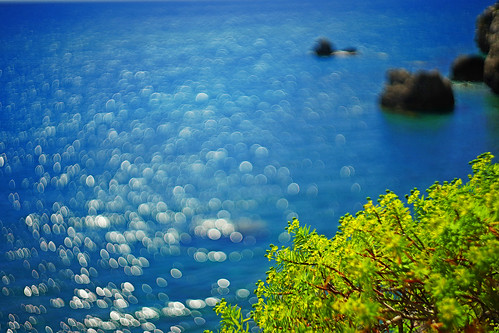Pictures (d’, e’, f’, j’, k’, l’, p’, q’, r’, v’, w’, x’) had been cropped sections from the white borders places in the pictures (a’, b’, c’, g’, h’, i’, m’, n’, o’, s’, t’, u’), respectively. (c and d) Quantification of red fluorescence intensity of AO staining (c) or Lyso-Tracker Red staining (d). Suggests S.D., n = 6. Po0.01 versus non-OGD group; Po0.01 versus OGD groupfurther indicated that 3-MA or Wort remedy attenuated OGD-induced lysosomal destabilization manifested by a reduction in lysosome swelling and rupture (Figures 7b and d). The above information recommend that 3-MA or Wort can stabilize OGD-induced lysosomal membrane instability in astrocytes. Inhibition of autophagy enhances OGD-induced upregulation in lysosomal heat shock protein 70.1B (Hsp70.1B) in astrocytes. Hsp70.1B is known to stabilize lysosomal membrane by recycling damaged proteins and safeguard cellsfrom various insults including heat, ischemia as well as other oxidative stresses.379 The chaperone function and inhibition of lysosomal membranes permeabilization or rupture would be the key mechanisms by which Hsp70.1B protects cells.391 We located that OGD induced a important improve in Hsp70.1B level in the course of the period of 32 h post-OGD in astrocytes (Figures 8a and b). Double immunofluorescence staining of Hsp70.1B and Lamp 1 showed that in non-OGD astrocytes, there was much less immunoreactive colocalization of Hsp70.1B with Lamp 1 (Figures 8c ). After OGD, the immunoreactivities of Hsp70.1BCell Death and DiseaseAutophagy inhibition blocks cathepsins release X-Y Zhou et albecame apparent, and upregulated Hsp70.1B was colocalized with Lamp 1, indicating the translocation PubMed ID:http://www.ncbi.nlm.nih.gov/pubmed/21338381 of Hsp70.1B for the lysosomal membrane (Figures 8c ).  Surprisingly, Hsp70.1B colocalized with Lamp 1 was much more intense when 3-MA or Wortwas added towards the astrocytes (Figures 8c ). These data indicate that the inhibition of autophagy upregulates the lysosomal Hsp70.1B, possibly contributing to a reduction in OGD-induced lysosomal membrane instability in astrocytes.Cell Death and DiseaseAutophagy inhibition blocks cathepsins release X-Y Zhou et alDiscussion To date, it’s effectively accepted that autophagy is usually a key mediator of neuronal cell death in cerebral ischemia.91,28,42,43 In 2010, we initial reported that autophagy is activated in ischemic astrocytes and contributes to astrocytic cell death.12 Similarly, Pamenter et al.44 found that astrocytes are more sensitive to conditions mimicking metabolic and ischemic MedChemExpress Ponkanetin tension of penumbral tissue than neurons and exhibit a stronger autophagic response to these stresses. Current advances have elucidated that autophagy and apoptosis can share prevalent regulators,458 which include Bcl-2, which has been identified as a central regulator of autophagy and apoptosis by interacting with each Beclin-1 and BaxBak, respectively. Several apoptotic proteins (e.g., PUMA, Noxa, Nix, Bax, XIAP and Bim) are also believed to become regulators of autophagy.48 However, the molecular mechanisms linking autophagy and apoptosis are not fully defined, especially in ischemic astrocytes. The novel aspect on the present work is the fact that the inhibition of autophagy blocks the activation and release of cathepsin, and result in the inhibition of tBid itochondrial apoptotic signaling pathway involving stabilization from the lysosomal membrane via upregulation in the lysosomal Hsp70.1B in ischemic astrocytes. The inhibition of autophagy blocks cathepsins Bid itochondrial apoptotic signaling pathway in ischemic cortex. Lysosomal proteases, like.
Surprisingly, Hsp70.1B colocalized with Lamp 1 was much more intense when 3-MA or Wortwas added towards the astrocytes (Figures 8c ). These data indicate that the inhibition of autophagy upregulates the lysosomal Hsp70.1B, possibly contributing to a reduction in OGD-induced lysosomal membrane instability in astrocytes.Cell Death and DiseaseAutophagy inhibition blocks cathepsins release X-Y Zhou et alDiscussion To date, it’s effectively accepted that autophagy is usually a key mediator of neuronal cell death in cerebral ischemia.91,28,42,43 In 2010, we initial reported that autophagy is activated in ischemic astrocytes and contributes to astrocytic cell death.12 Similarly, Pamenter et al.44 found that astrocytes are more sensitive to conditions mimicking metabolic and ischemic MedChemExpress Ponkanetin tension of penumbral tissue than neurons and exhibit a stronger autophagic response to these stresses. Current advances have elucidated that autophagy and apoptosis can share prevalent regulators,458 which include Bcl-2, which has been identified as a central regulator of autophagy and apoptosis by interacting with each Beclin-1 and BaxBak, respectively. Several apoptotic proteins (e.g., PUMA, Noxa, Nix, Bax, XIAP and Bim) are also believed to become regulators of autophagy.48 However, the molecular mechanisms linking autophagy and apoptosis are not fully defined, especially in ischemic astrocytes. The novel aspect on the present work is the fact that the inhibition of autophagy blocks the activation and release of cathepsin, and result in the inhibition of tBid itochondrial apoptotic signaling pathway involving stabilization from the lysosomal membrane via upregulation in the lysosomal Hsp70.1B in ischemic astrocytes. The inhibition of autophagy blocks cathepsins Bid itochondrial apoptotic signaling pathway in ischemic cortex. Lysosomal proteases, like.